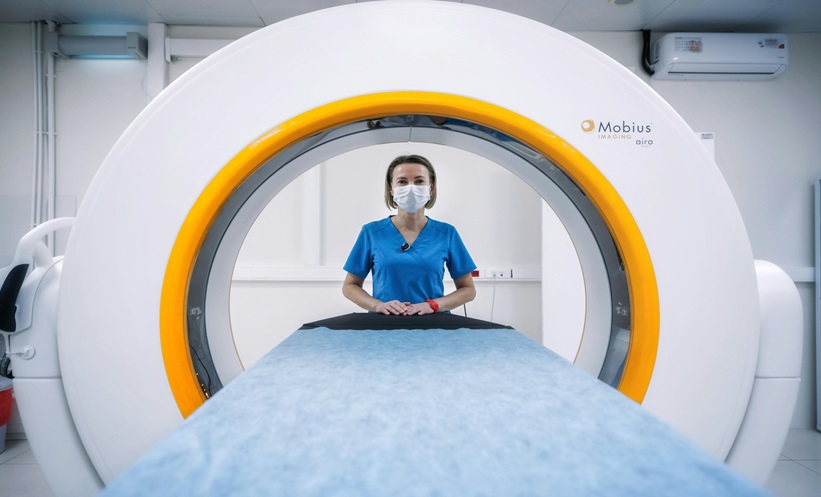Author: Helena Bradbury, EMJ, London, UK
Citation: Neurol AMJ. 2024;1[1]:20-23. https://doi.org/10.33590/neurolamj/TTAH5347.
![]()
EMERGING VIRUSES
Powassan Virus
Daniel Pastula, University of Colorado, Aurora, USA, opened with three insightful case studies, followed by a vote asking the audience to choose the virus they believed to be the cause of each clinical case. With 64% of votes, the first case study was of the Powassan virus (POWV). As explained by Pastula, this virus has two main viral lineages, which are clinically and serologically indistinguishable: POW, identified in Ontario, Canada, in 1958; and POW2, identified in Northern Colorado, USA, in 1952.
Notably, POWV cases peak during May/June, with an evident male predominance in infection rates. Its incubation period typically spans 1–4 weeks, with 25% of cases progressing to neuro-invasive meningoencephalitis, carrying a 10% mortality rate and a 50% risk of long-term neurological sequelae. Diagnosis primarily relies on serologic tests, necessitating a screening for POWV IgM followed by a confirmatory POWV neutralizing antibody test (e.g., PRNT).
Unfortunately, as highlighted by Pastula, there is currently no specific disease-modifying treatment against POWV. Alternatively, Pastula shared recommendations to mitigate tick bite infections, advocating for measures such as wearing long-sleeved shirts and pants, utilizing U.S Environmental Protection Agency (EPA)-approved tick repellent, and avoiding densely vegetated areas.
Mpox Virus
The second case study focused on Mpox. This is a double-stranded DNA virus hailing from the Poxviridae family, and is notably large, measuring 200×300 nm, with a genome length of 170–250 kb. It features two distinct clades: I (Central African) and II (West African). Transmission occurs through various means, including direct contact with infected rashes or scabs, respiratory droplets, fomites, or via bites or consumption of an infected animal. Pastula highlighted the 2003 Mpox outbreak in the USA, triggered by the importation of African rodents infecting prairie dogs sold as pets nationwide. Presently, a significant outbreak is underway in the Democratic Republic of the Congo, primarily affecting children in over two-thirds of cases.
Clinical features include an incubation period of 3–17 days and classical symptoms such as fever, fatigue, myalgia, and a widespread vesiculopustular rash, typically lasting 2–4 weeks. Neurological manifestations mainly present as headaches (>50%), with seizures, confusion, and encephalitis being rarer occurrences (approximately 3%, 2%, and 2%, respectively). Diagnosis primarily relies on PCR testing of skin lesions or fluid by Mpox virus nucleic acid. Several antiviral therapies exist, including tecovirimat, vaccinia immune globulin intravenous, cidofovir, and brincidofovir.
Pastula emphasized the importance of raising awareness to target specific subgroups during outbreaks, as it can prompt people to change their behavior to reduce infection rates. For instance, during a 2022–2023 Mpox outbreak in the UK, infections were notably prevalent among gay males. Upon alerting the community, an online survey was later conducted among gay, bisexual, and other males who have sex with males between August 5–15, 2022. Respondents reported deliberately altering their behavior to minimize the risk of infection. For example, 48% decreased their number of sexual partners, 50% reduced one-time sexual encounters, and an equal percentage decreased sexual activity with partners met on dating apps. These proactive behavioral changes resulted in a decline in cases.1
Japanese Encephalitis Virus
For the third case study, Pastula detailed the Japanese encephalitis virus (JEV), an arthropod-borne virus closely linked to Murray Valley encephalitis, St. Louis encephalitis, Usutu, and West Nile viruses. It primarily spreads through mosquitoes, particularly Culex tritaeniorhynchus, which originates from northern Asia. These mosquitoes thrive in low-lying water-logged areas with a temperature of around 23 °C, commonly found near rice farms, or around pigs and wading birds, acting as amplifying hosts. Diagnosis typically involves testing JEV IgM serum or cerebrospinal fluid (CSF). Although there is no disease-modifying treatment available, Pastula reiterated the importance of using EPA-approved insect repellent, wearing long sleeves, and utilizing air conditioning/screens to deter mosquitoes.
Notably, there was a sudden outbreak of JEV in southeast Australia from February–April 2022, resulting in 37 cases and three deaths. It was found to be linked to pig farms located along the Murray Valley, and extreme rainfall that preceded the outbreak. In his concluding remarks, Pastula urged for continued vigilance and research to better understand emerging viruses, and noted several other emerging viruses such as Bourbon virus, La Crosse virus, Ross River virus, Zika virus, and many others.
EMERGING BACTERIA, FUNGI, AND PARASITES
Neurosyphilis
Felicia Chow, University of California, San Francisco, USA, subsequently discussed syphilis, citing some troubling statistics; in 2022 there was a total of 207,255 syphilis cases reported in the USA, representing an 80% increase since 2018. Congenital syphilis has also seen a dramatic epidemic; in 2022 there were over 3,000 cases of congenital syphilis, a 10-fold increase from 300 in 2013.
Chow explored the various testing and treatment approaches for syphilis. For instance, there are two types of tests: non-treponemal (e.g., rapid plasma regain and venereal disease research laboratory) and treponemal tests (e.g., treponema pallidum particle agglutination assay and fluorescent treponemal antibody absorption). Treponemal tests detect antibodies specifically against the syphilis bacterium and remain positive for life; whereas, non-treponemal tests detect antibodies produced in response to infection and may become negative after treatment.
Chow elaborated on the array of treatment options for neurosyphilis, highlighting intravenous penicillin (administered at 18–24 million units per day, given as 3–4 million units intravenously every 4 hours for 10–14 days) as the preferred choice, with ceftriaxone (2 g intravenously daily for 10–14 days) as a suitable alternative. Referring to UK and European guidelines, she underscored that doxycycline is also considered a viable alternative for treating neurosyphilis. Quoting a supporting 2021 retrospective single-center study involving 87 patients (median age: 35 years), she noted that oral doxycycline administered for 30 days may present a reasonable substitute for intravenous penicillin in early neurosyphilis, as evidenced by clinical and serological response.2 Additionally, she referenced a recent 2023 trial, which demonstrated the effectiveness of doxycycline as post-exposure prophylaxis in reducing the incidence of sexually transmitted infections, including syphilis, gonorrhea, and chlamydia.3
Balamuthia Mandrillaris
Cases of Balamuthia encephalitis predominantly emerge from South America (Peru) and the USA, with infection typically occurring through respiratory exposure or skin injury. A total of 109 cases were documented in the USA from 1974–2016, with 68% affecting males and 39% involving individuals with compromised immune systems.4 The subcutaneous presentation can include confusion, fever, and seizures, with many patients also developing a distinct facial skin lesion earlier on as well. Regarding treatment, a combination therapy involving various drugs with proven in vitro efficacy and strong penetration into the central nervous system is typically employed. This treatment regimen, which may include pentamidine, fluconazole, and flucytosine, often extends for a duration of 12–18 months.
Cryptococcus gattii Infection
Finally, Chow delved into Cryptococcus gattii infection, which accounts for roughly 20% of all cryptococcal infections worldwide. This pathogen, associated with trees, resides in soil, bark, and other tree-related debris. Initially viewed as a tropical or subtropical ailment, it is now increasingly recognized as an emerging threat in temperate climates. Moreover, a compelling study linking land use to the rise of C. gattii infections, revealed a direct correlation between deforestation/tree harvesting and the incidence of this pathogen.
Clinical presentations often feature a robust inflammatory response, significantly impacting morbidity and mortality rates. Symptoms may include cerebral edema, headache, neck stiffness, encephalopathy, seizures, and cranial neuropathies. Additionally, around 50% of cases present with concurrent pulmonary infections.
While CSF culture remains the gold standard for diagnosis, it can be a time-consuming process, taking days to weeks. Alternatively, the Cryptococcal antigen test demonstrates excellent sensitivity and specificity in blood and CSF for both C. neoformans and C. gattii. However, its sensitivity may be slightly lower in patients without HIV (86% versus 100%).
CONCLUSION
In closing, these talks on emerging pathogens, be that viral, bacterial, parasitic, or fungal, highlight the need for continued awareness and preparedness. By better understanding the complexities of emerging pathogens, and developing effective clinical treatment strategies, we are more equipped for future outbreaks.
References
- Delaney KP et al. Strategies adopted by gay, bisexual, and other men who have sex with men to prevent Monkeypox virus transmission – United States, August 2022. MMWR Morb Mortal Wkly Rep. 2022;71(35);1126-30.
- Girometti N et al. Clinical and serological outcomes in patients treated with oral doxycycline for early neurosyphilis. J Antimicrob Chemother. 2021;76(7):1916-19.
- Luetkemeyer AF et al. Postexposure doxycycline to prevent bacterial sexually transmitted infections.
N Engl J Med. 2023;388(14):
1296-306. - Cope JR et al. The epidemiology and clinical features of Balamuthia mandrillaris disease in the United States, 1974-2016. Clin Infect Dis. 2019;68(11):1815-22.







